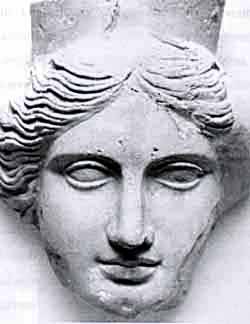|
Itineraries
– Itinerary III (first part)
by Gustavo Cannizzaro
The Territory
|
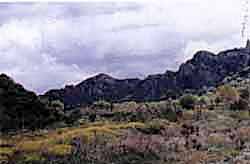
Panorama

Panorama
|
The infinite tonalities
of the green territories of Caulonia, the soft waves of the
hills, the characteristic “cafuni” or valleys, the whitish area
of the badlands and the silvery stretch of the coast, harmoniously
frame the town which is built at the top of a group of hills
which dominate the valleys of the Allaro river and of the Amusa
river. The continual mule-tracks and narrow dusty lanes which
lead from one estate to another and which divide the ridges,
cut through the valleys and coast the fields, offer many picturesque
panoramas both to drivers and to walkers. In the region of Marina
di Caulonia we find the Camillari tower.
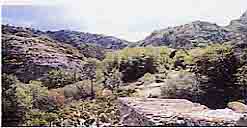
Allaro river
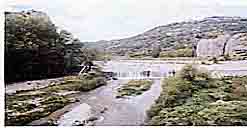
Allaro river |
The Camillari
tower
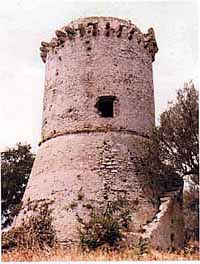
Camillari
tower |
The tower was built around
1550, commissioned by Fabrizio Pignatelli, as part of a vast protection
project along the entire coast, against the Saracens who, from
the beginning of the XIX century posed a threat to the entire
area. Along the Calabrian coast alone, 72 towers were built, one
every 6 miles. From documents of the time, refered to by Davide
Prota in “Ricerche Storiche su Caulonia”, there are detailed descriptions
about the functioning of these towers and the important role they
covered. The surveillance service was continually covered by the
local soldiers and the punishments were severe for transgressing
the rules. The cylindrical tower rises in a strategic position
at the top of a hill. Although it is one of the best kept towers
in Calabria, it needs urgent restoration work. The worst thing
is that it is virtually suffocated by the cement of the houses
built irrationally and chaotically around it over the last twenty
years.
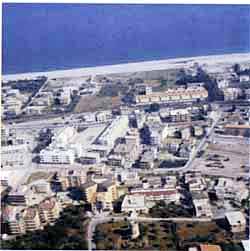
Caulonia beach |
A small tissue of land
around it has been left from the building assault. Immediately
below the tower, some walls have been excavated, they belong to
an ancient Greek settlement.
M. T. Iannelli writes: “The research carried out by the Calabrian
Archaeological Superintendency in the area of the 1500s defence
tower known as Camillari, found that the top of the hill was already
inhabited during the Greek era. The remains of four rooms with
dry built walls, using river stones and brick fragments, date
back to the V century B.C. Below the crumbled walls, only a few
centimetres high, thanks to the use of the same stones in the
construction of the tower, a great number of Greek amphoras were
found. This suggests the presence of food supplies in connection
with a defence construction. Rather than a farm tied to the exploitation
of the land, the Camillari ruins have been recognised as having
clear strategic functions connected to the area’s topography.
Before the cement wildness in the area, it was possible to see
Punta Stilo, the Greek Promontorium Cocynthum, stretching into
the sea. It was not by chance that the same area was chosen, many
years later, to build the watch tower which was to defend the
population from enemy incursions”. From the Camillari tower it
is possible to possible to descend to the “nazionale” road and
drive north to the Anguglia-Mattanusa area.
The Anguglia-Mattanusa
area
It is quite a level area
entirely occupied by spectacular orange gardens.In 1925, the
remains of a white monumental building were found. This is where
the clay head of a female deity, now kept in the National Museum
of Magna Grecia in Reggio Calabria, was found. “The slightly
rounded oval face with delicate lineaments and careful finish,
is framed by softly waved locks of hair, divided into two swelling
ropes which cover the ears. Her head bears the slightly flared
head-dress” (R. Agostino). This head is a refined sample of
clay work, it differs from contemporary artisan products. It
highlights a renewal, on behalf of the local artisans, of the
typical Greek sculptural models of the so called classical age,
i.e. V century B.C.
The whole area is of
archaeological interest. Although from a topographical and cronological
point of view, the frequent findings are not connected to each
other, they nonetheless stand as testimonial to the great archaeological
richness and variety of our territory.
In the Mattanusa locality,
so called for its abundant archaeological findings, rubble,
bricks construction stones etc. have been recorded. This is
where according to tradition the ancient Caulonia rose. This
tradition was wrong, and Paolo Orsi later identified it as having
been at today’s Punta Stilo of Monasterace Marina. The Trinity
Church, with half its body sunken into the ground, also stands
in the Mattanusa area
|









